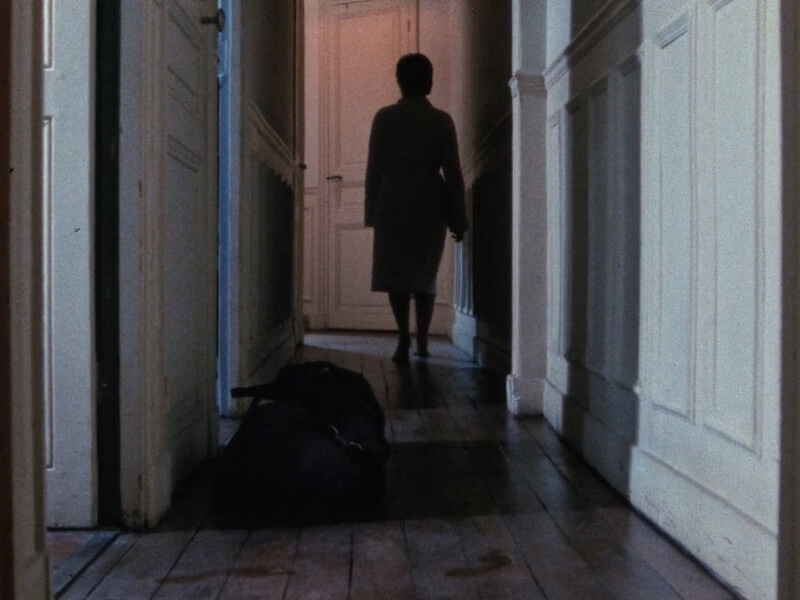
A woman returns to her apartment after an absence of two months. She finds an "indirect" friend who has made himself at home and seems reluctant to leave the place he has completely taken over. Dejected, she retreats to a bedroom. A game of cat and mouse begins between the invader and her "captive".
EN
“Rhythm is another Akermanian source of comedy par excellence. In this sense, the heroine of The Man with the Suitcase is not far away from Charlotte, the writer played by Sylvie Testud in Tomorrow We Move (2004). Both characters are extremely sensitive to rhythm. Charlotte’s writing is constantly short-circuited and re-routed by the music coming from another room, her thoughts crossed by a melody, her fingers carried away by the notes. In The Man with the Suitcase, the heroine also feels this invasive interference: her attention is swamped by Henri’s noises that cause her to go silent, diverting her actions, speeding or slowing the tempo of her movements. Akerman is one of the few directors who has nailed down the problem of conviviality by depicting, often with great humor, the luminous synchronies and hellish asynchronies of different people’s rhythms.”
Cristina Álvarez López1
- 1Cristina Álvarez López, "Foreplays #12: Chantal Akerman's "The Man with the Suitcase"," Mubi Notebook Column, 4 June 2018.
FR
“Une fois de plus le monde mis en place et en images par Akerman est un univers de concentration, absolument clos, mais dont le personnage captif constitue, en même temps que les limites, le centre absent. La personne elle-même devient à la fois le lieu de l'enfermement et le lieu de la fuite, de l'échappée. Le corps est fuyant (il se fond au milieu des meubles), la personnalité et les émotions insaisissables, comme si l’enfermement et la béance étaient finalement tos jours amenés à se confondre. Ce qui trouble le plus fortement dans ce film, c'est l'incroyable énergie que le personnage féminin dépense pour ne pas résoudre une situation invivable, c qui a pour effet de la plonger inévitablement dans un état de frustration et de fatigue extrême. On en vient à penser que l'objet emblématique du cinéma d'Akerman pourrai bien être quelque chose comme une baignoire qui se vide, ou, mieux peut-être, un sablier troué.”
Dick Tomasovic1
- 1Dick Tomasovic, “L’homme à la valise” dans Chantal Akerman: Autoportrait en cinéaste (Paris: Éditions du Centre Georges Pompidou/Éditions Cahiers du cinéma, 2004), 192-193.

